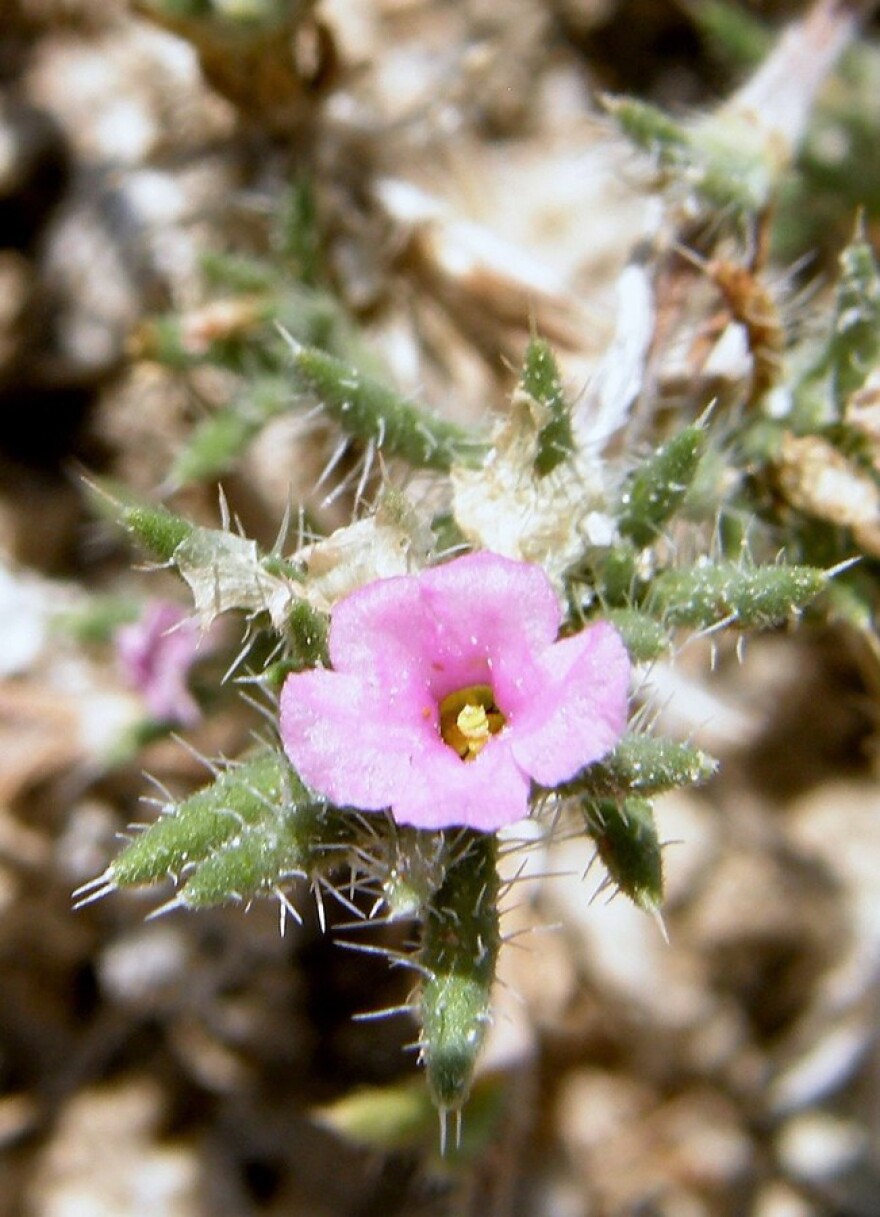The white sands of the Chihuahuan Desert – which, in the U.S., are found at their namesake national park in New Mexico, and near the Guadalupe Mountains – are rightfully described as “otherworldly.” The gypsum dunes are luminous, hypnotic. But there's something else that makes these places a “world apart”: hundreds of plant species found nowhere else.
In recent years, gypsum ecosystems have been the focus of an international research initiative. The project is called Gypworld, and, from West Texas to Australia, it's unlocking the mysteries of these extreme environments – and of the stunning adaptability of living things.
Walking the dunes, or the chalky gypsum flats and hills that surround them, it's not hard to see these are difficult settings for life. It's not just aridity. Gypsum soils are nearly devoid of the nutrients – like nitrogen – plants typically require.
That scores of plants – including members of the sunflower, mustard and four o'clock families – have adapted, and live only on gypsum, raises tantalizing questions.
Mike Moore, of Oberlin College, studies these “gypsophiles.”
“We biologists tend to look for weird stuff,” Moore said, “because it's both interesting and illuminating. Understanding organisms that live in weird environments is a really wonderful way to understand a lot of things about biology, including the evolutionary process.”
The Chihuahuan Desert has the greatest diversity of gypsum plants. But there are gypsum exposures in arid places around the world – from Spain to Chile, Iran to Australia – and each has a unique flora.
In 2017, a Spanish botanist named Sara Palacio received a European Union grant to study these ecosystems worldwide. The goals of “Gypworld” include assessing the diversity of gypsum plants and lichens, and investigating the mechanisms plants use to survive these forbidding conditions.
Moore was part of the project, and New Mexico State University botanist Donovan Bailey facilitated the work in our region. Bailey hosted teams of scientists from around the world, and introduced them to gypsum locales, including at Guadalupe Mountains and White Sands national parks.
“So we took them out to all those kinds of sites,” Bailey said, “and then came up with study plans each year. Then they spent the better part of a month collecting their data at all these different sites.”
The global collaboration yielded insights. Gypsum is essentially calcium and sulfur – both, in high concentrations, kill cells. But the scientists found that, around the world, gypsum plants “hyper-accumulate” sulfur. Scientists don't know how – but “sucking up” sulfur somehow helps gypsophiles survive.
“The ecological patterns seem to be strikingly similar – even though they're completely different species in different areas,” Moore said. “You can't know that if you don't have different kinds of biologists working together.”
The research could have practical applications. The white sands are extreme gypsum environments – but gypsum is present in many soils. Gypworld's findings could assist agriculture in those places.
How these plant communities developed strains comprehension. Gypsum exposures separated by tens or even hundreds of miles contain the same plants, or related species. The research suggests the first gypsophiles developed about 5 million years ago, and spread from one gypsum locale to another – likely via wind or birds.
Moore's other area of study is Hawaiian plants. And there's a resonance, he said.
“The only way to get from one Hawaiian island to another, if you're a terrestrial organism and can't fly, is dumb luck,” he said, “and I think it's exactly the same on these soil islands. Each individual dispersal event is very unlikely. But if you give it a million years, then eventually it'll occur.”
Gypworld also looked at the conservation status of gypsum ecosystems. Climate change is already impacting plant life in our region – sky-island forests devastated by recent drought are unlikely to fully recover. Gypsophiles can likely tolerate a warming world. But there are other threats. Gypsum formations like the Yeso Hills, near the Guadalupe Mountains, have been impacted by fracking. And in some places, gypsum is mined extensively for dry wall.
Gypsum ecosystems are natural laboratories of evolution. Bailey said Gypworld was a first step in understanding these strange and striking places, and the remarkable life they sustain.
“There's only so much that can be done in a grant like this,” he said, “so we're hoping it will spur further collaboration and further grants and further research down the road. It's a big grant, but it's a stepping stone toward really understanding these ecosystems more.”



